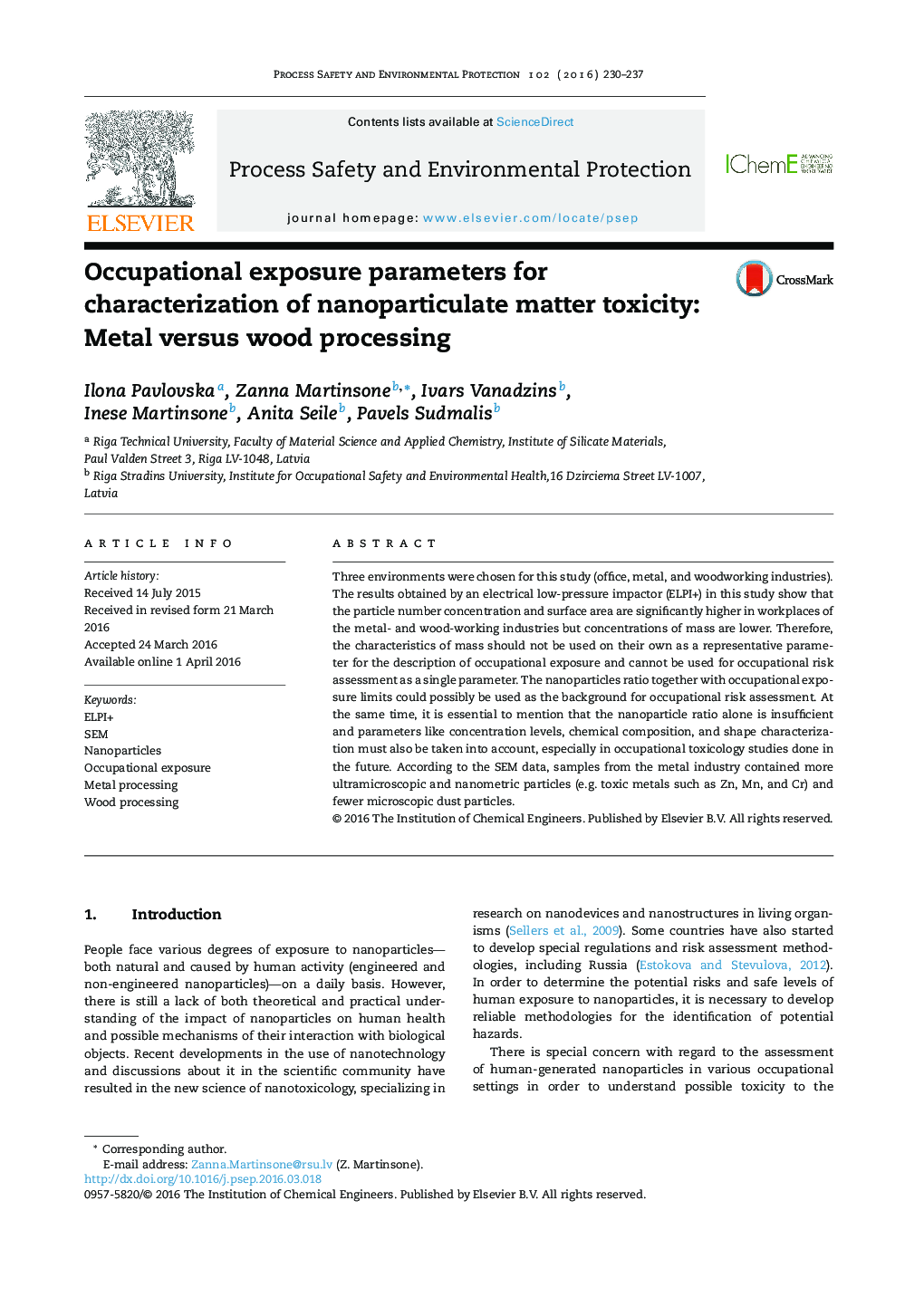| Article ID | Journal | Published Year | Pages | File Type |
|---|---|---|---|---|
| 588078 | Process Safety and Environmental Protection | 2016 | 8 Pages |
•Practical evaluation of nanoparticle distribution in three different working environments.•SEM and ELPI+ as characterization of nanoparticles for assessment of occupational exposures.•Occupational exposure and a wide range of potential negative health effects.•Improving, developing, and reviewing of occupational exposure limits.
sThree environments were chosen for this study (office, metal, and woodworking industries). The results obtained by an electrical low-pressure impactor (ELPI+) in this study show that the particle number concentration and surface area are significantly higher in workplaces of the metal- and wood-working industries but concentrations of mass are lower. Therefore, the characteristics of mass should not be used on their own as a representative parameter for the description of occupational exposure and cannot be used for occupational risk assessment as a single parameter. The nanoparticles ratio together with occupational exposure limits could possibly be used as the background for occupational risk assessment. At the same time, it is essential to mention that the nanoparticle ratio alone is insufficient and parameters like concentration levels, chemical composition, and shape characterization must also be taken into account, especially in occupational toxicology studies done in the future. According to the SEM data, samples from the metal industry contained more ultramicroscopic and nanometric particles (e.g. toxic metals such as Zn, Mn, and Cr) and fewer microscopic dust particles.
